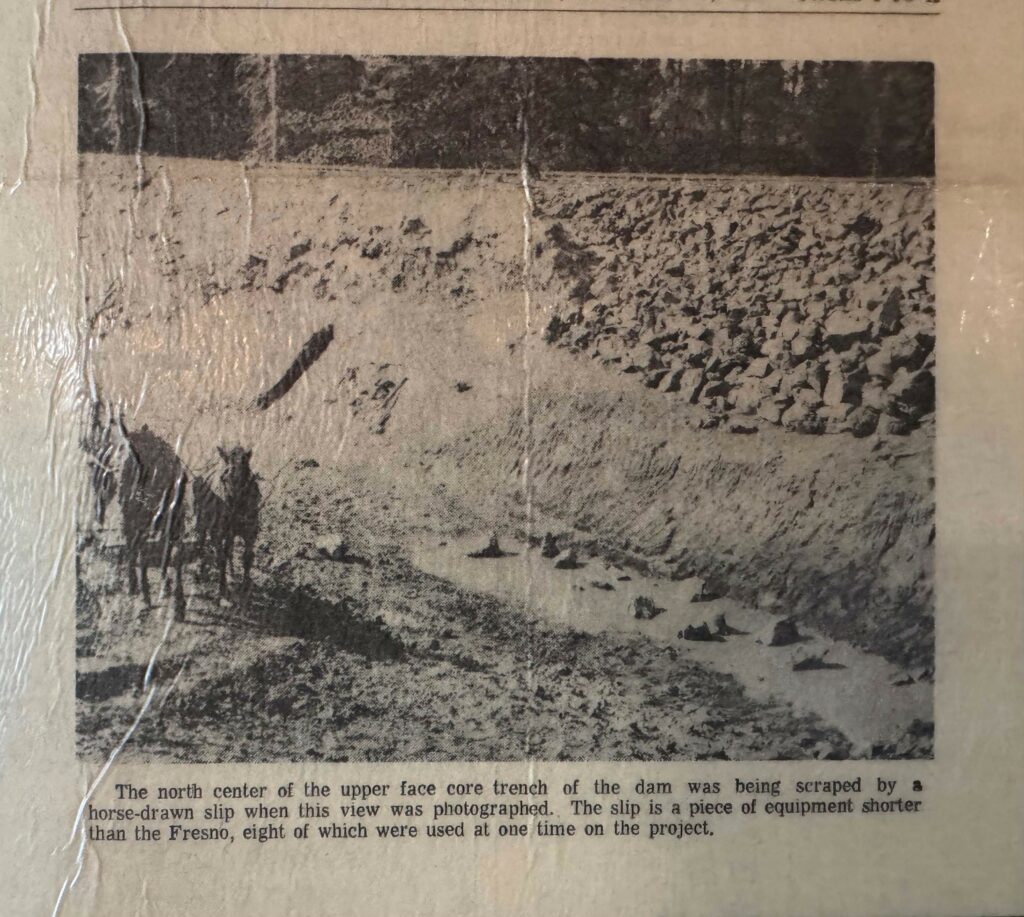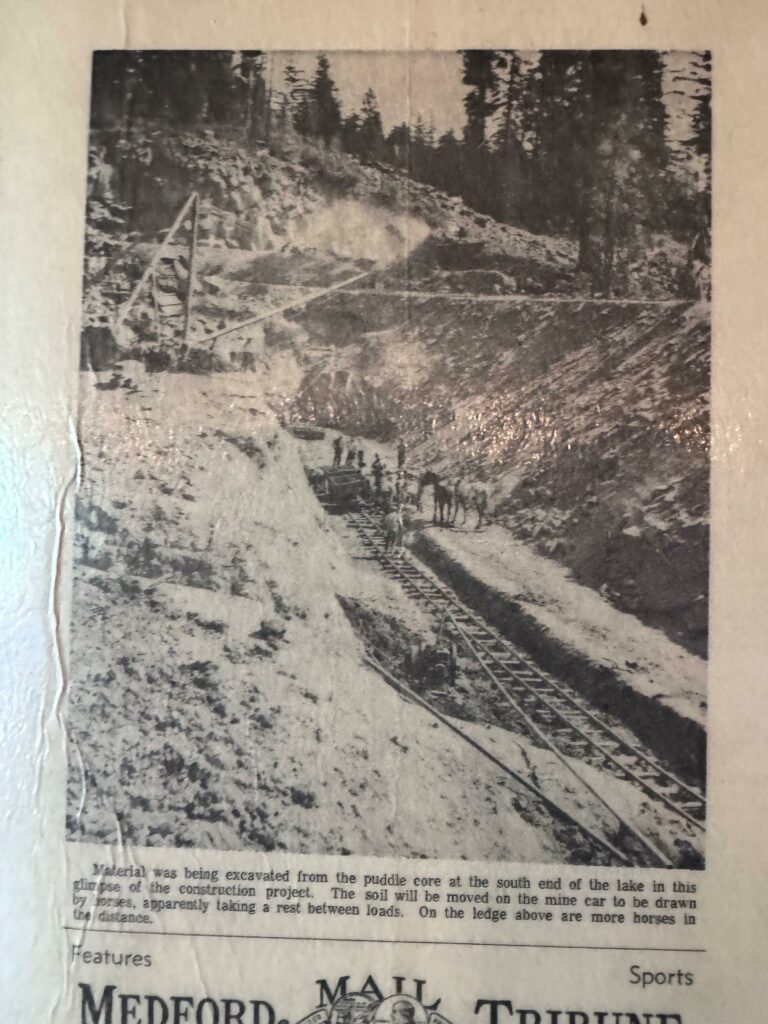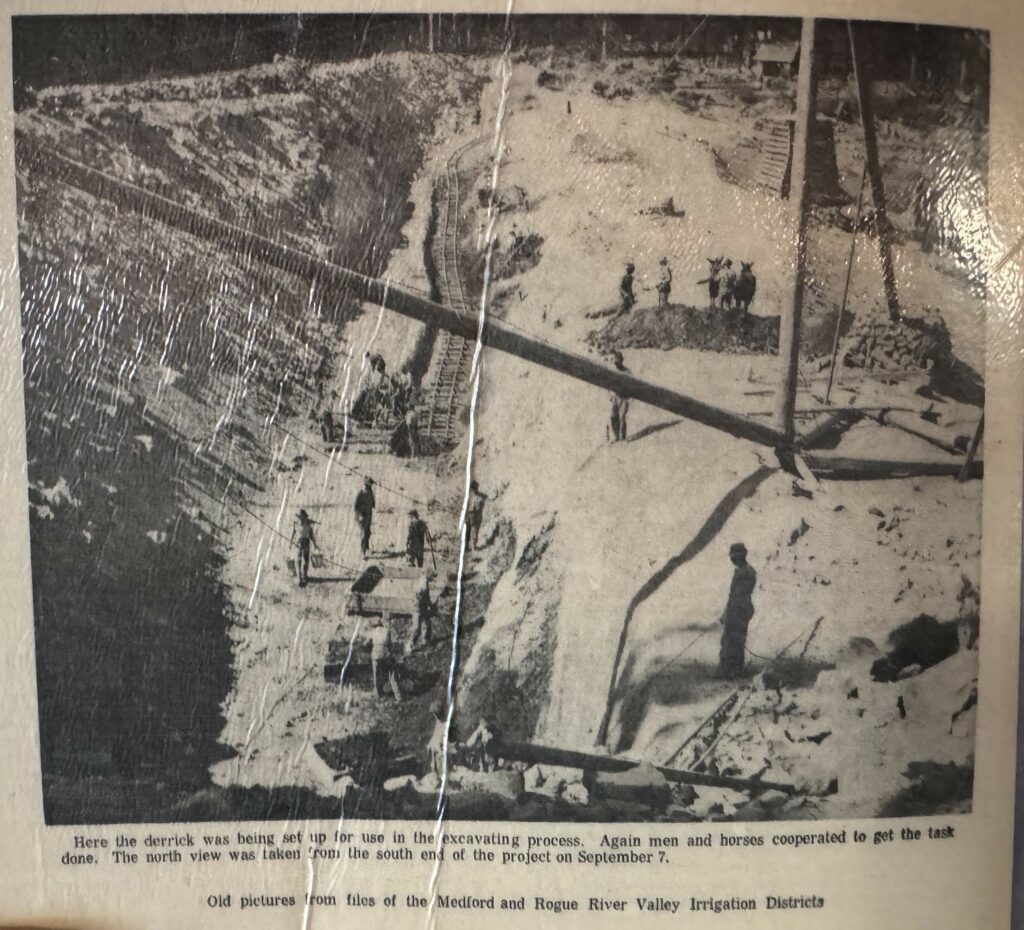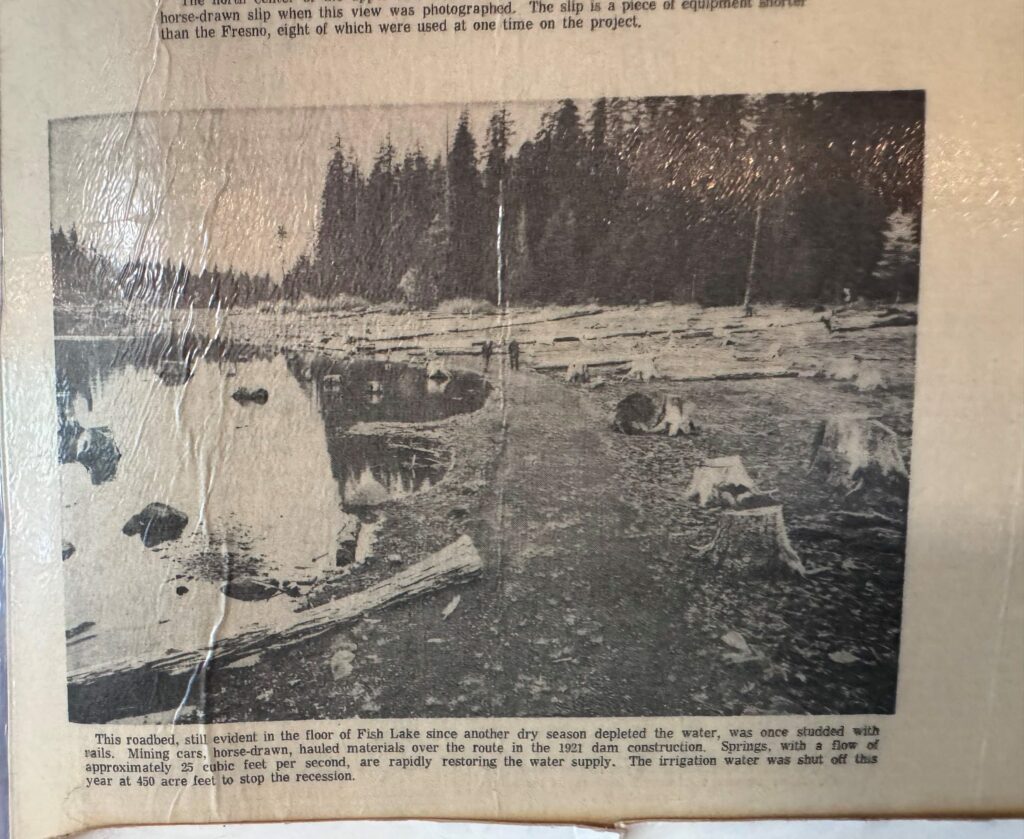In the early 20th century, the Rogue Valley in southern Oregon faced a pressing need for reliable irrigation to support its burgeoning agricultural industry. To address this, the Fish Lake Water Company was established in 1898, proposing an ambitious project to expand water storage by enlarging Fish Lake and creating Fourmile Lake. These efforts culminated in the construction of the Cascade Canal, a remarkable feat of engineering that diverted water from the Klamath River watershed into the Rogue River basin.

Between 1902 and 1908, a temporary dam was constructed at Fish Lake, situated at the headwaters of the North Fork of Little Butte Creek. This initial structure aimed to increase the lake’s capacity to support irrigation needs. In 1906, the Fourmile Lake Dam was completed, and by 1915, the Cascade Canal connected the two lakes, allowing water from Fourmile Lake to flow over the Cascade Divide into Fish Lake, thereby supplementing the water supply for the Rogue Valley.
Disaster struck in 1917 when the original Fish Lake Dam was washed out, necessitating the construction of a more permanent solution. In 1921, under the supervision of D.H. Blakelock, construction inspector for the Rogue Valley Irrigation District, work commenced on a new earthfill dam designed to restore Fish Lake’s capacity to 8,300 acre-feet. The project faced numerous challenges, documented in a diary kept by Blakelock, including the absence of modern machinery. Workers relied on horses, wagons, air compressors, derricks, steam rollers, blasting, and gas engines to create and transport materials and build the dam.

The construction site was fraught with hazards. Blasting operations ignited a brush fire near the rock crusher, and a gas engine backfire rendered the crusher inoperative for several days. On one occasion, a car loaded with rock derailed, causing the horses to panic; one suffered a broken leg and had to be euthanized. Despite these setbacks, a workforce ranging from 95 to 138 men persevered, often working through nights and contending with harsh weather conditions.
On September 23, 1921, the first materials were placed in the puddle trench, a critical component of the dam’s core designed to prevent seepage. Teams of horses hauled five cars, each holding about 1.5 cubic yards of material, achieving a daily movement of approximately 250 cubic yards until the needed 8,000 cubic feet was obtained. The first concrete was poured on October 25, but winter soon set in, bringing rain, snow, and freezing temperatures. Workers heated mixing water with steam to pour concrete, and frozen sections of previously poured walls had to be removed before additional layers could be added. Despite these adversities, the crew’s determination ensured the project’s continuation until the camp closed on December 21 due to plummeting temperatures.

The Cascade Canal itself is an engineering marvel, stretching approximately 4.7 miles and transporting water from Fourmile Lake, situated at an elevation of 5,748 feet, over the Cascade Divide to Fish Lake at 4,639 feet. This canal diverts about 5,462 acre-feet of water annually, with approximately 33% lost or spilled enroute.
Today, Fish Lake stands as a testament to early 20th-century engineering and the relentless spirit of its builders. The lake, now about three times its original size, continues to provide essential water resources for the Rogue Valley and serves as a popular destination for recreation, offering activities such as fishing, swimming, and boating amidst the scenic backdrop of the southern Oregon Cascades.

Information sourced from newspaper clippings at Fish Lake Resort

 Behind every route is scouting, mapping, storytelling, and a whole lot of pedal power.
Behind every route is scouting, mapping, storytelling, and a whole lot of pedal power.